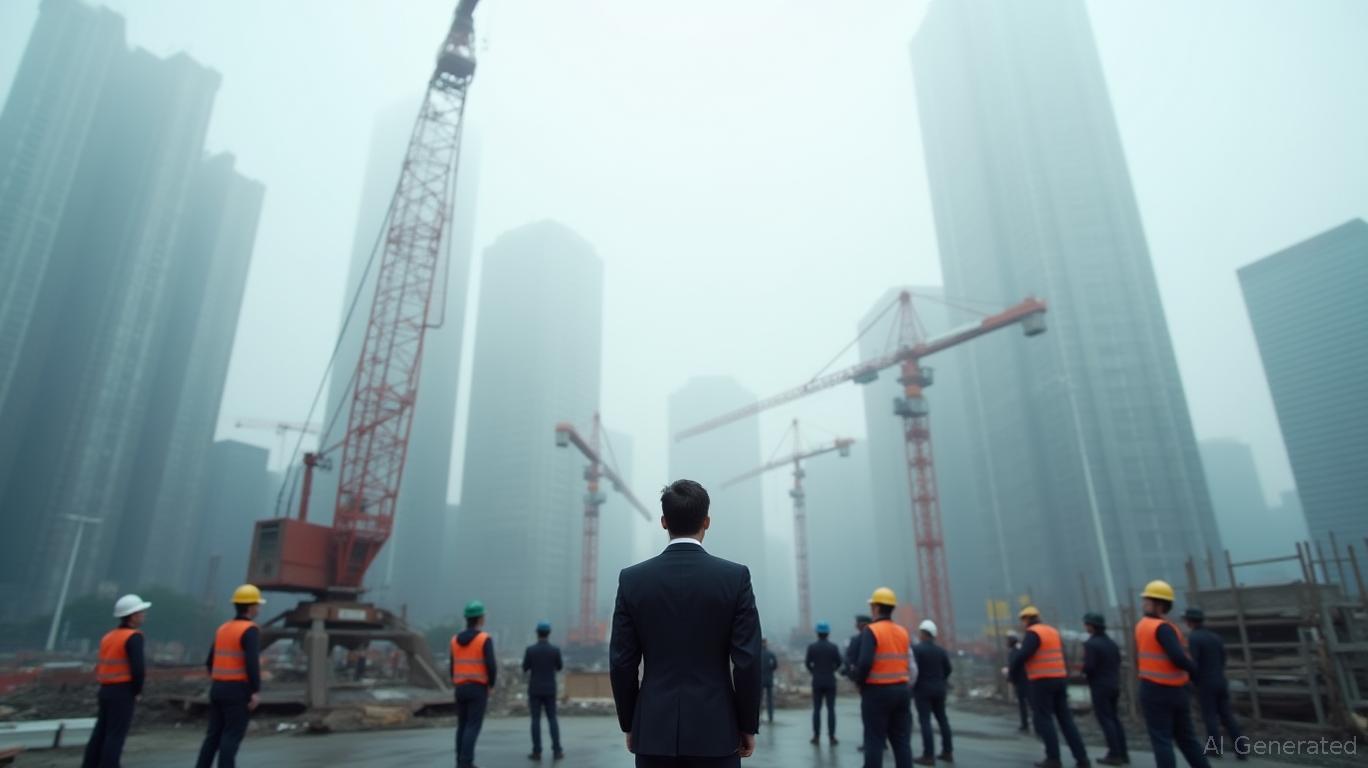Japan's Collapsing Housing Market: Navigating Structural Decline and Cyclical Volatility
The Japanese housing market is in freefall. In April 2025, housing starts plummeted to 56,188 units—a 37% drop from March's temporary surge—and marked a 26.6% year-on-year decline. This sharp reversal from March's 39.1% spike underscores the fragility of a sector now caught between cyclical volatility and irreversible structural decay. For investors, the stakes are clear: understanding the interplay of these forces is critical to positioning for risks and opportunities across construction equities, real estate, and broader financial markets.

Cyclical Volatility: A False Dawn?
The March 2025 spike to 89,432 units—a 39.1% monthly jump—was misleadingly bullish. Analysts attribute it to seasonal distortions and pent-up demand, not a sustainable rebound. Meanwhile, April's collapse was exacerbated by delayed approvals and supply chain bottlenecks. Yet, construction orders for the top 50 contractors surged 52.7% year-on-year in April, suggesting latent demand.
This disconnect hints at a cyclical challenge: orders are rising while actual starts are collapsing. The gap may narrow if bottlenecks ease, but structural headwinds loom larger.
Structural Decline: The Demographic Timebomb
Japan's housing crisis is rooted in its shrinking population. With 8.49 million abandoned homes (14% of total housing stock) and projections of over 20 million vacant units by 2033, over-supply is systemic. Even if immigration reforms attract 800,000 foreign workers by 2029—up from 200,000—this will barely offset annual population losses of ~580,000.
The math is grim: fewer households mean fewer buyers, even as construction costs rise due to labor shortages. Real estate prices, up 2.65% in early 2024, have stagnated after inflation adjustments. This “price ceiling” traps developers in a low-margin, high-risk game.
Policy Responses: Band-Aids on a Bullet Wound
The government's toolkit is limited. Tax incentives for homebuyers and subsidies for repurposing abandoned homes have had negligible impact. Meanwhile, immigration reforms face cultural and logistical hurdles: only 20% of promised visas are being utilized.
Monetary policy adds to the pain. The Bank of Japan's gradual rate hikes—pushing mortgage rates to 0.25%—are making housing affordability worse. For investors, this means higher defaults in subprime mortgages and rising credit risk for banks exposed to construction loans.
Sectoral Implications: Winners and Losers
- Construction Firms: Avoid equities like Taisei Corp. (TYHIF) or Kajima (KJMIF), which are leveraged to housing starts. Their margins are under pressure, and debt-heavy balance sheets amplify risks.
- Real Estate: Land prices in Tokyo dipped 0.7% year-on-year in early 2025, while Osaka's fell 0.5%. Investors in REITs like Mitsubishi Estate (MSELY) face prolonged stagnation.
- Insulated Sectors: Look to healthcare (e.g., Terumo (TRUMY)), robotics (Fanuc (FANUY)), or tech (Sony (SNE))—industries less tied to housing cycles.
Investment Strategy: Short Construction, Long Demographic Solutions
- Short Positions: Bet against construction stocks and real estate ETFs (e.g., iShares MSCI Japan Real Estate ETF (JKY)).
- Long Positions: Invest in automation firms (e.g., Komatsu (KMTUY)) or elderly care providers (e.g., Seven & I Holdings (SVNDY)), which cater to Japan's aging population.
- Wait for a Bottom: Monitor June's housing data (due June 29) for signs of stabilization. A rebound above 60,000 units could trigger a cyclical bounce—but structural risks remain.
Conclusion: A New Era of Decline
Japan's housing market is entering a “new normal” of low starts, over-supply, and demographic decline. While cyclical factors may spark temporary rebounds, structural forces ensure prolonged weakness. Investors must pivot away from construction-linked equities and toward sectors insulated from Japan's demographic timebomb. The next data release on June 29 will test if this reality—or hope—prevails.
Act now: Exit construction exposure, and ride Japan's demographic pivot toward tech and healthcare. The clock is ticking.

Comments
No comments yet